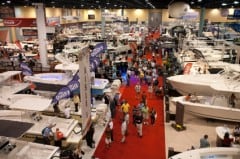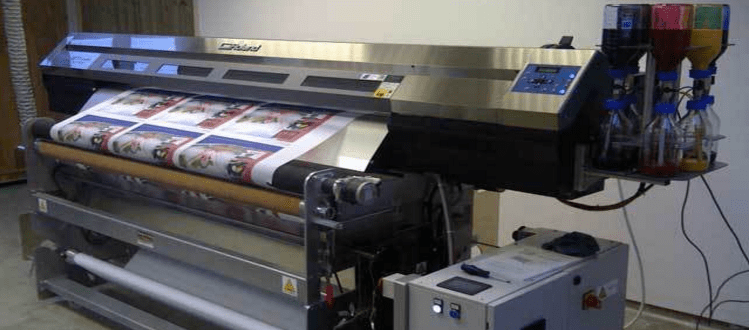If you did a search for fabric sublimation printing, you were looking for textile company that does banners, posters, or flags. While this has been around for decades, this particular term has become most closely associated with the large format printing industry, specifically banners and trade show graphics.
I’ve mentioned in other articles on this topic that dye sub printing is a relative newcomer in the sign and banner industry, and that in the past decades, vinyl banners were the main advertising medium for inexpensive temporary advertising. Vinyl items are still a huge industry, and everything from billboards to the sides of buildings and even truck trailers have vinyl displays advertising on them.
Fabric Sublimation Printing – A Description of What Exactly Takes Place During Dye Sub Printing
For the more artistically inclined client, and particularly those who are wanting to advertise their product or service at trade shows or in retail environments have never been completely satisfied with the plastic-like appearance of banners, although matte finish ones have been around for the past decade and at least they’re not shiny. This particular print method answered the need to be able to buy one or a few banners, full color, and not mortgage the home and sell the family into servitude to be able to do so.
Chemistry + Polyester
 So, what is fabric sublimation printing? This is typically done using a wide format digital printer which embeds a specialized CMYO dye onto a transferable substrate, typically a paper treated to accept the dyes. CMYO is different from typical wide format inkjet printers which use CMYK (cyan-magenta-yellow-black). CMYO is cyan-magenta-yellow-overprint process is used in this method. It uses a clear overprint instead of black.
So, what is fabric sublimation printing? This is typically done using a wide format digital printer which embeds a specialized CMYO dye onto a transferable substrate, typically a paper treated to accept the dyes. CMYO is different from typical wide format inkjet printers which use CMYK (cyan-magenta-yellow-black). CMYO is cyan-magenta-yellow-overprint process is used in this method. It uses a clear overprint instead of black.
Because of the chemistry of the dyes, the fabric is necessarily high polymer cloth like polyester or nylon. Cotton (a natural fiber), which doesn’t have the polymers that polyester has, can’t be used. When heat is applied to the dye and the polyester cloth, the dye converts to a gaseous state without becoming liquid, thereby creating clean and beautiful prints. Our clients often want to transfer photos to their displays, and this method does it with style.
The inks come in two forms, the older being a dry transfer ribbon. But with newer technology, they are printable with an inkjet-type printer onto a treated paper. The way it works is, first, you send an image to the printer, which in turn prints the image onto the paper. Then you remove the paper and marry it to the polyester cloth and run it through a heat press for a given amount of time. This converts the dye from a solid state to a gaseous state and causes it to penetrate the polyester to the degree that it becomes part of the fabric. This image is literally “burned” into the cloth, so unlike vinyl substrates, the ink can’t be scratched or removed from the surface.
Why this is becoming so Popular with Companies That Want to Distinguish Themselves From Their Competitors
The method has the added benefit of being a continuous tone technology, where each dot or ink could be any color, as opposed to CMYK press where each color is laid down successively. It appears more photographic than an inkjet-to-vinyl print because it features true continuous tones. Inkjets spray down color in patterns that simulate continuous tones, so to the naked eye it looks like a photo, but when compared side-by-side, the latter will have true photo quality. You can have a look here to see that quality which I am talking about.
So, if you’re at a trade show with a standard vinyl printed display, and your competitor next to you has a beautiful, continuous-tone, sublimated cloth banner, potential clients may subconsciously view your company as potentially cutting corners with your products or services or even your customer service, because it’ll be obvious that your competitor cares about their first glance. Or maybe, they are the ones who didn’t choose banners produced with fabric sublimation printing! But you did.
Popular Posts:




